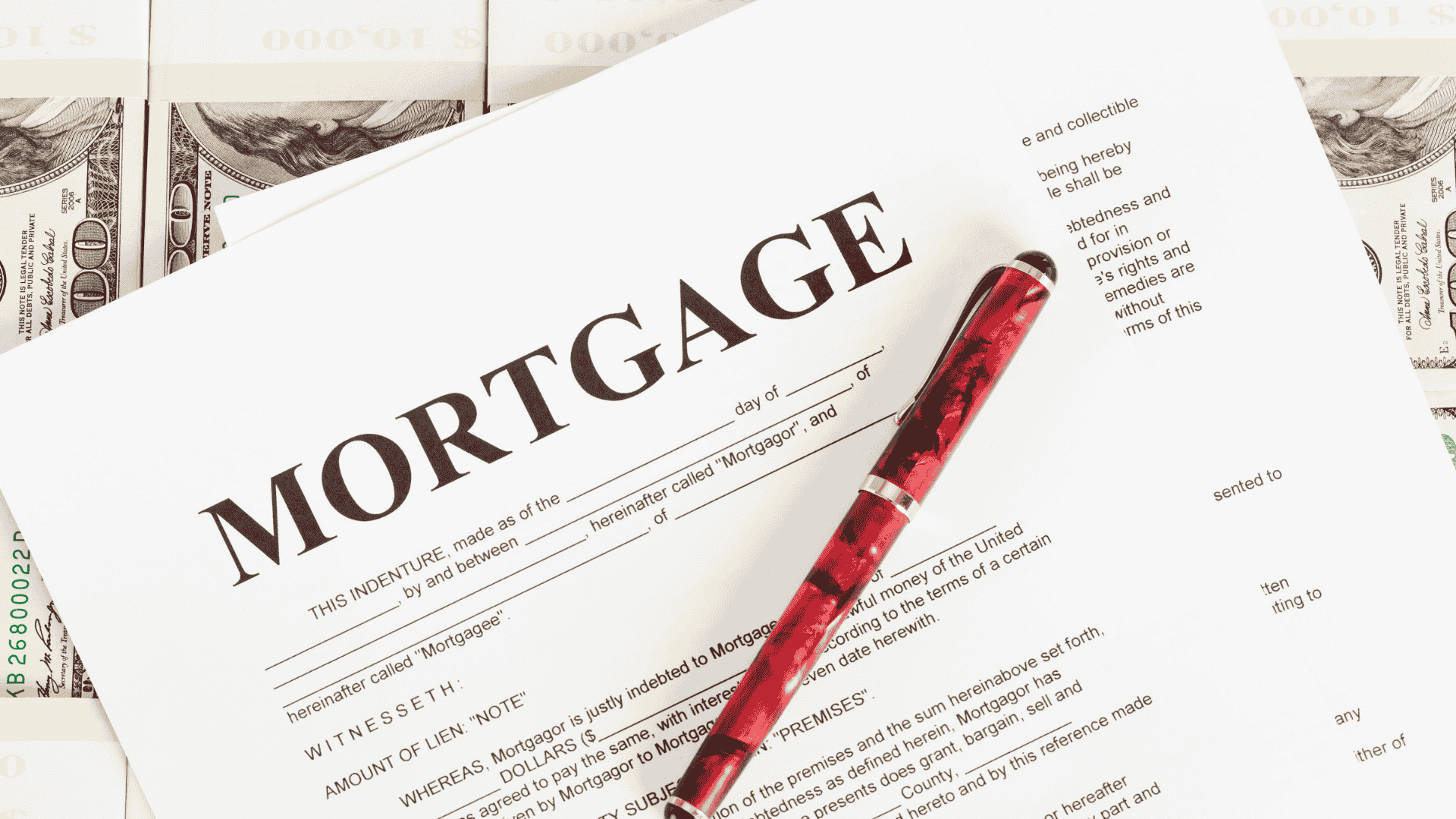U.S. Mortgage Rates Today July 13th: Slight Increase Today
Daily U.S. Mortgage Rate Update: July 13, 2025
Key Takeaways
- 30-year fixed rates edged up slightly.
- 15-year fixed rates also saw a minor increase.
- ARMs show varied movements across terms.
- Experts foresee continued rate moderation.
- Homebuyers should secure pre-approvals.
- Refinancers may find opportunities if current rates are higher.
- Real estate investors should consider long-term outlooks.
Investment Properties: Browse Turnkey Rental Properties For Sale in Our Online Portal
Current Mortgage Rates for Purchase Loans
Here are the average mortgage rates for various purchase loan types as of July 13, 2025:
| Tipo de préstamo | Tipo de interés | APR |
|---|---|---|
| Fijo a 30 años | 6.76% | 6.82% |
| 20-Year Fixed | 6.50% | 6.59% |
| Fijo a 15 años | 5.97% | 6.06% |
| 10-Year Fixed | 5.86% | 5.94% |
| VA Mortgage (30-Year Fixed) | 6.72% | 6.76% |
| FHA Mortgage (30-Year Fixed) | 6.67% | 6.73% |
| Jumbo Mortgage (30-Year Fixed) | 6.83% | 6.89% |
| 7-Year ARM | 6.23% | 6.48% |
| 5-Year ARM | 6.00% | 6.52% |
| 3-Year ARM | 5.78% | 6.57% |
Rates are subject to change and are averages based on data from various sources as of July 13, 2025. Sources: Bankrate, NerdWallet, The Mortgage Reports.
Current Mortgage Rates for Refinance Loans
For homeowners considering refinancing, here are today’s average rates:
| Tipo de préstamo | Tipo de interés | APR |
|---|---|---|
| 30-Year Fixed Refinance | 6.81% | 6.88% |
| 20-Year Fixed Refinance | 6.62% | 6.71% |
| 15-Year Fixed Refinance | 6.11% | 6.20% |
| 10-Year Fixed Refinance | 6.09% | 6.17% |
| VA Mortgage Refinance (30-Year Fixed) | 7.29% | 7.36% |
| FHA Mortgage Refinance (30-Year Fixed) | 6.93% | 6.99% |
| Jumbo Mortgage Refinance (30-Year Fixed) | 6.77% | 6.81% |
| 7-Year ARM Refinance | 6.33% | 6.59% |
| 5-Year ARM Refinance | 6.17% | 6.51% |
| 3-Year ARM Refinance | 6.02% | 6.55% |
Rates are subject to change and are averages based on data from various sources as of July 13, 2025. Sources: Bankrate, NerdWallet.
Commentary and Analysis
As of July 13, 2025, the U.S. mortgage market continues it’s slight upward movements in rates following a recent period of stability. This shift comes amidst a broader economic landscape where inflation remains a central concern for policymakers. While some economic indicators suggest the market might be cooling, the potential for tariff-induced price increases and ongoing geopolitical uncertainties are tempering expectations for significant rate cuts in the near term. The Federal Reserve, having held its benchmark interest rate steady throughout 2025 after three cuts in 2024, is reinforcing the “higher for longer” sentiment that continues to influence bond yields and, consequently, mortgage rates.
The housing market itself presents a mixed picture. While national home price growth has slowed considerably, with some regions even experiencing sharp declines in house prices, other more affordable markets in the Midwest and Northeast are showing more resilience. This highlights localized a lot of regional variation driven by inventory levels and affordability constraints. The latest Mortgage Monitor report from ICE Mortgage Technology points to early signs of financial stress among certain homeowner segments, particularly those with limited equity or relying on short-term affordability products like ARMs.
Dr. Selma Hepp, Chief Economist at Cotality, notes, “Concerns about affordability, economic outlook, and elevated mortgage rates are holding buyers back.” This sentiment reflects the cautious approach many prospective homeowners are adopting in the current environment.
Greg McBride, Bankrate’s chief financial analyst, offers a perspective, “A slowing economy should help bring bond yields and mortgage rates a bit lower in July — but just a bit. Concerns about inflation and escalating government debt will keep a high floor under rates.” This suggests that while minor dips are possible, a substantial decline in rates is unlikely in the immediate future.
Aaron Forster, an OMA Advisor, provides an outlook, “2025 will be a busy year for mortgages, especially remortgages. It’s set to have the largest volume of customers of fixed rate deal maturities. Also, while inflation may start to rise slightly in 2025, with Trump in power and the cost of goods increasing, it’s still likely we will see interest rates fall, albeit slower than what was originally predicted a couple of months ago.” This highlights the anticipated wave of refinancing activity and the complex interplay of economic and political factors on long-term rate trajectories.
Related: U.S. Mortgage Rate Forecast and Expert Predictions 2025, 2026, 2027, 2028, 2029
What This Means for You
For Homebuyers:
The current rate environment, while elevated compared to historic lows, remains below the long-term average. This means that borrowing costs are still manageable for many. However, the recent upward movement underscores the importance of staying informed and acting strategically.
- Get Pre-Approved: A pre-approval strengthens your offer in a competitive market and locks in a rate, protecting you from potential increases.
- Shop Around: Rates can vary significantly between lenders. Compare multiple offers to ensure you get the best possible terms.
- Consider Different Loan Types: While fixed-rate mortgages offer stability, explore ARM options if you anticipate selling or refinancing within the initial fixed period, as they often come with lower initial rates.
- Explore First-Time Buyer Programs: FHA, VA, and USDA loans can offer lower down payments and more flexible qualification criteria, making homeownership more accessible.
For Homeowners Looking to Refinance:
For the majority of homeowners, refinancing may not offer significant savings unless their current mortgage rate is considerably higher than today’s averages. Many homeowners secured historically low rates during the pandemic.
- Calculate Your Break-Even Point: Determine how long it will take for the savings from a lower interest rate to offset the closing costs of refinancing.
- Consider Your Goals: Are you looking to lower your monthly payment, shorten your loan term, or tap into home equity? Your goal will influence the best refinance product for you.
- Cash-Out Refinance: If you have substantial equity, a cash-out refinance could provide funds for home improvements, debt consolidation, or other financial needs. Weigh the benefits against the cost of a new, potentially higher, interest rate on your entire loan.
For Real Estate Investors:
The current mortgage rate environment presents both challenges and opportunities for property investors. While higher rates impact financing costs, the broader market dynamics and potential for localized stress points are worth noting.
- Focus on Cash Flow: With elevated rates, conservative deal underwriting is key. Scrutinize potential rental income and expenses to ensure positive cash flow.
- Leverage Local Market Knowledge: The best rental property investment opportunities are found in regional and local markets with strong rental demand, good housing affordability, and reasonable rent-to-price ratios.
- Explore Non-QM Loans: Non-Qualified Mortgage (Non-QM) loans can offer flexibility for investors who may not fit conventional lending criteria, though they often come with higher interest rates.
- Long-Term Strategy: Taking a long-term buy and hold view supports better decision making.
U.S. Mortgages for Foreigners and Non-Residents
For international investors, foreign nationals, and non-residents looking to purchase property in the U.S., specific mortgage programs are available. Some of these loans also cater to individuals without a traditional U.S. credit history or permanent residency. That said, be prepared for bigger down payments, and slightly higher rates.
| Tipo de préstamo | Rate Range (Approx.) | LTV Range | Ideal Use Case |
|---|---|---|---|
| Foreign National Loan | 7.76% – 8.75% | Hasta 80% | Foreign nationals with provable foreign income and good foreign credit. |
| ITIN Loan | 7.26% – 8.25% | Hasta 80% | Non-Residents with an ITIN, U.S. income, and U.S. Credit. |
| Préstamo DSCR | 6.75% – 7.75% | Hasta 75% | Foreign Nationals and Non-Resident buying rental properties. No U.S. credit or income required. |
Rates and LTVs for foreign national loans can vary significantly based on lender, borrower profile, and property type. It is crucial to consult with specialized lenders.
Foreign National Lenders: A Complete List of U.S. Mortgage Lenders With Foreign National, ITIN, and DSCR Loan Programs for Non-Residents
These specialized loan programs offer pathways for international investors and non-residents to access the U.S. real estate market, often with distinct requirements compared to conventional mortgages. It’s important to work with lenders experienced in these unique financing options to understand all terms and conditions.
Previous Update: U.S. Mortgage Rates Today July 12, 2025: Modest Increase
GET PRE-APPROVED TODAY!
Comience hoy mismo su viaje de inversión inmobiliaria en Estados Unidos y desbloquee oportunidades de financiación exclusivas. Book a llamada estratégica gratuita 1:1 con un miembro de nuestro equipo directivo para discutir su estrategia personalizada.
“Having personally invested in over 120 US rental properties from overseas, I know the true value of getting the right advice and support.
David Garner - Cashflow Rentals
GROW YOUR WEALTH WITH U.S. REAL ESTATE
Start your US real estate investment journey today, and book a llamada estratégica gratuita 1:1 with a member of our senior management team.
“Having personally invested in over 120 US rental properties from overseas, I know the true value of getting the right advice and support.
David Garner - Cashflow Rentals

Preguntas frecuentes
What factors influence U.S. mortgage rates?
U.S. mortgage rates are influenced by a variety of factors, including the overall health of the U.S. economy, inflation, actions by the Federal Reserve (especially its benchmark interest rate decisions), bond market investor sentiment (particularly the 10-year Treasury yield), and the supply and demand dynamics within the housing market. Global economic events can also play a role.
Should I lock my mortgage rate today?
Deciding when to lock your mortgage rate depends on your personal financial situation and your outlook on future rate movements. If you’re comfortable with the current rates and want to avoid potential increases, locking your rate provides certainty. If you believe rates will fall further, you might consider floating your rate, but this carries the risk of rates rising instead. Many lenders offer “float down” options, which allow you to lock in a rate but also take advantage of a lower rate if it becomes available before closing.
What is the difference between interest rate and APR?
The interest rate is the percentage you pay on the principal loan amount. The Annual Percentage Rate (APR) is a broader measure of the cost of borrowing money. It includes the interest rate plus other costs like origination fees, discount points, and mortgage insurance, spread out over the loan term. APR provides a more complete picture of the total cost of the loan.
How often do mortgage rates change?
Mortgage rates can change daily, and sometimes even multiple times within a single day. They are highly responsive to economic data releases, news, and market sentiment. While the general trend might remain stable for weeks, minor fluctuations are common on a day-to-day basis.
Is it a good time to buy a home with current mortgage rates?
Whether it’s a good time to buy depends on your individual circumstances. While rates are higher than the pandemic lows, they are still below the long-term historical average. If you are financially stable, have a down payment, and have found a home that meets your needs, buying can still be a good decision, especially if you plan to stay in the home long-term. Remember, you can always refinance in the future if rates drop significantly.







![USA Property Investment for Foreign Buyers [2025 Guide]](https://cashflowrentals.net/wp-content/uploads/2025/07/USA-Property-Investment-for-Foreigners-Expert-2025-Guide-500x383.png)



